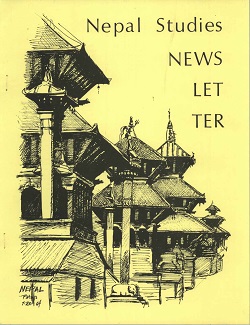Author Biography
Michelle Ursula Grocke received her P.h.D. in Medical Anthropology from the University of Montana in 2016. She is currently an Assistant Professor in the Department of Health and Human Development at Montana State University and the Health and Wellness Specialist for Montana State University Extension. Her research focuses on socio-cultural determinants of health, food security, dietary transitions, and drug addiction among rural populations. In her work, Michelle utilizes anthropological concepts and field methods to help design and evaluate community and public health programs in rural Montana, Peru, and Nepal.
Kimber Haddix McKay is an applied medical anthropologist with expertise in research design, quantitative methods, and evaluation. Her research focuses on the interplay between marriage systems and fertility, and on demographic and health trends in South Asian and African societies. After completing a post-doctoral training fellowship in demography at UC Berkeley, she joined the faculty at the University of Montana, where she is jointly appointed to Anthropology and the School of Community and Public Health Sciences. In between terms she enjoys teaching a regional seminar on global health at NYU Abu Dhabi, traveling with students to Nepal and Uganda.
Thomas Foor received his Ph.D. in Anthropology from the University of California, Santa Barbara in 1982. He specializes in ethnological and archaeological theory, quantitative and measurement applications with a particular focus on ethnohistorical and archaeological records. Dr. Foor did his undergraduate work and earned his M.A. in anthropology at The University of Montana. He did his postdoctoral work at the University of Michigan in mathematical psychology and is a Professor Emeritus in the Anthropology Department at The University of Montana.
Abstract
Although the first road to ever be built into Humla, Nepal is still under construction, it has already spurred numerous sociocultural and economic changes, including an increased integration into the market economy, changing access to market-purchased foods, and new kinds of health-seeking behavior. This paper is part of a larger research project where we examined changing health and nutrition outcomes co-synchronous with the arrival of this road. In this paper, we focus on whether and how the road is affecting villagers’ subjective well-being (SWB). We studied this while living and working with people from two Humli villages, one that is on the road, and one that is far from it. In these villages, we developed two local models of SWB, using the villagers’ own conceptual frameworks and sense of the factors that play a role in wellbeing. Our analyses showed that villagers’ conceptualization of SWB varied substantially according to road proximity. Additionally, we quantified indices from villagers’ SWB assessments and tested which variables were significant determinants of wellbeing. We discovered a significant relationship between an individual’s well-being level and two variables: available resources per household and levels of social support. The purpose of this paper is threefold: to better understand how villagers from Upper Humla define SWB, to identify which subset of the population is not benefitting in terms of their SWB from the new road, and to present a mixed-methods, anthropologically-based approach for the development of a locally meaningful measure of SWB.
Acknowledgements
The authors would like to extend their sincere gratitude to Mr. Penpa Tsering Lama, who spent countless hours over many months helping with everything from translation to data collection to logistics and planning during fieldwork. This project would not have been possible without him, and the numerous families in Kale and Gyepo who opened up their homes and hearts during the time the authors were in Upper Humla District, Nepal. The authors are also truly grateful to Mr. Tsepal Dorje Lama, Mr. Anjuk Lama, Mr. Pralhad Dhaka and Ms. Pema Ramla for their insight and guidance along the way. Two anonymous reviewers provided invaluable suggestions to an earlier draft, almost all of which have been incorporated. This research was funded by the National Science Foundation (Grant #1420405) and the Fulbright U.S. Student Program and received local logistical assistance from Adara Development.
Creative Commons License

This work is licensed under a Creative Commons Attribution-Noncommercial-No Derivative Works 4.0 License.
Recommended Citation
Grocke, Michelle U.; McKay, Kimber Haddix; and Foor, Thomas. 2019. Subjective Well-Being in Two Himalayan Communities, Post Road Development. HIMALAYA 39(1).
Available at:
https://digitalcommons.macalester.edu/himalaya/vol39/iss1/7


